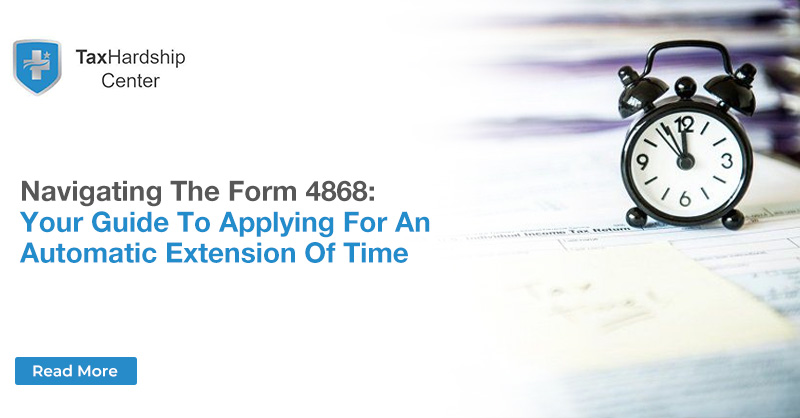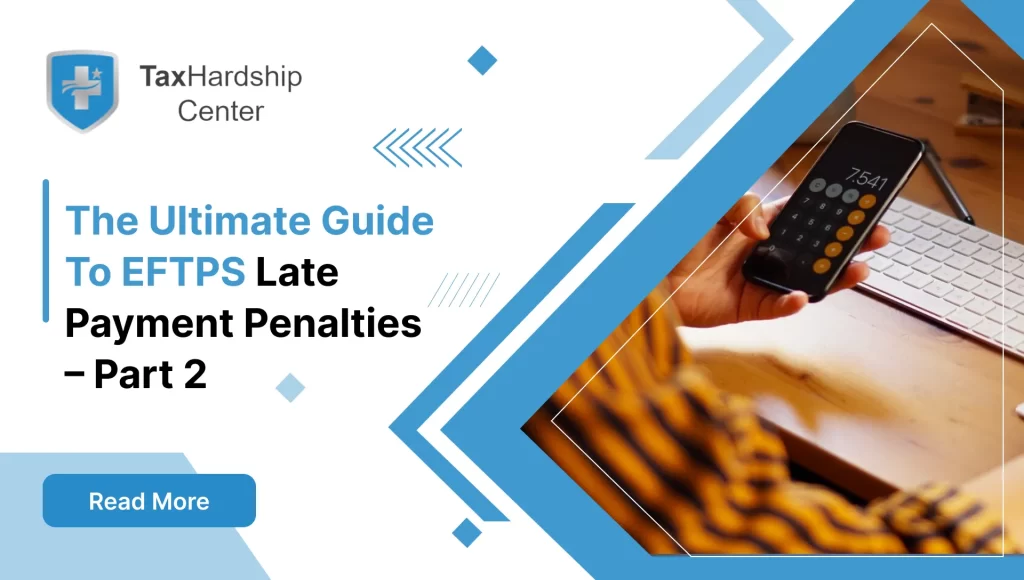Filing taxes is a responsibility that comes with its share of complexities and deadlines. The Internal Revenue Service (IRS) provides taxpayers with a tool to manage deadlines better – Form 4868, Application for Automatic Extension of Time to File U.S. Individual Income Tax Return. This form allows individuals to extend the deadline for submitting their federal income tax returns. This article delves into the nuances of Form 4868, its impact, and the challenges you might face with this application.
What is Form 4868?
Form 4868, recognized as the Application for Automatic Extension of Time to File U.S. Individual Income Tax Return, is a crucial document for taxpayers who need additional time beyond the standard April 15 deadline to prepare their federal income tax returns. The IRS understands that various circumstances may prevent tax filers from compiling all the necessary documentation or completing their returns on time. Therefore, it provides Form 4868 as a lifeline to those taxpayers, granting them a grace period that extends their filing date by six months, moving the due date to October 15.
However, it is essential to note that Form 4868 pertains explicitly to the extension of filing the tax return — not an extension of time to pay the tax owed. Whether you are dealing with unexpected life events, missing documentation, or simply need more time to ensure the accuracy of your return, Form 4868 serves as the tool to help you avoid the penalties associated with missing the original filing deadline, provided you adhere to the extended October 15 deadline.
Stressed About Taxes? Get a FREE Form 4868 Extension Consultation & Expert Guidance (14-Day Money-Back Guarantee!)
Contact the Tax Hardship Center here to assist you in navigating taxes and ensure you get the best possible tax benefits without fuss. Schedule a free 1-1 consultation now.
How does Form 4868 work?
When you file Form 4868, you are engaging with the IRS’s provision for an automatic extension that requires no explanation or excuse as to why the extra time is needed; the extension is granted to all who apply. However, this benefit covers only the submission of the tax return documents and does not afford any leeway for paying any taxes you might owe.
Thus, taxpayers anticipating that they will have a tax liability must take another step when they file Form 4868. They must make a reasonable and accurate estimate of their tax liability for the year and submit any balance owed to the IRS alongside their extension form. This preemptive payment should be made by the original April 15 deadline to avoid or minimize penalties and interest.
These penalties can be twofold: the failure-to-file penalty and the failure-to-pay penalty. The former can be steep, costing you 5% of your tax due for each month (or part of a month) that your return is late, up to a maximum of 25%. In contrast, the latter penalty is gentler, at 0.5% per month on any taxes not paid by the deadline. Interest also accrues on unpaid taxes and penalties until the balance is paid in full.
By leveraging Form 4868 correctly and paying any estimated taxes owed on time, you place yourself in a favorable position, allowing for thorough tax return preparation while avoiding unnecessary financial penalties. It’s a form of insurance against the rush and potential oversights that can occur when trying to meet the original deadline, providing peace of mind and the flexibility needed to ensure your tax filings are accurate and complete.
Who can file Form 4868?
Form 4868 is a universal application for individuals seeking more time to compile the necessary information to complete their federal income tax returns accurately. This IRS form is available to a wide range of taxpayers, encompassing various personal and financial circumstances that may impede their ability to meet the standard filing deadline of April 15th.
Who, specifically, can benefit from filing Form 4868? Here are the various groups and scenarios:
1. Taxpayers Residing Outside the U.S.:
If you’re a U.S. citizen or resident living outside the country on the regular due date of your return, you might need additional time to gather your records or qualify for special tax treatment. Form 4868 provides the flexibility to ensure that these complexities don’t result in a late filing.
2. Individuals with Complicated Tax Situations:
Those with intricate financial portfolios, such as investments, rental properties, or involvement in partnerships or trusts, often need extra time to receive all the information necessary to file a complete and accurate return.
3. Taxpayers Dealing with Unique Circumstances:
Life events such as a death in the family, serious illness, or natural disasters can disrupt tax preparation. Form 4868 gives relief to those facing such challenging times.
4. Procrastinators and Overwhelmed Filers:
Some individuals need more time to complete or feel overwhelmed by the tax filing process. Applying for an extension with Form 4868 can allow these taxpayers to organize their documents and prepare their tax returns without rushing.
5. Those Awaiting Last-Minute Information:
Occasionally, you may be waiting for essential tax documents that have not arrived on time, such as corrected forms or statements from financial institutions. Form 4868 allows you the extra time to file once all necessary documentation is received.
6. Taxpayers Who Expect to Amend Returns:
If you know that amending a prior year’s tax return will impact the current year, submitting Form 4868 ensures you have adequate time to make these adjustments.
7. Self-employed Individuals:
Entrepreneurs and freelancers with fluctuating incomes may need additional time to accurately calculate their tax obligations, primarily if they deal with quarterly estimated taxes.
Understanding that the eligibility to file Form 4868 doesn’t hinge on your reason for needing an extension is crucial. The IRS doesn’t require an explanation; any individual taxpayer who wishes to apply can do so. However, regardless of the reason for leveraging Form 4868, it’s imperative to highlight again that the extension is for filing the tax return, not an extension of time to pay any taxes due.
How to file Form 4868?
When requesting an automatic extension of time to file your individual income tax return, knowing how to file Form 4868 properly can save you from unnecessary stress and potential penalties. You have multiple filing options, each with its own set of considerations. Let’s walk through the different methods available for submitting Form 4868:
1. Electronically Using IRS e-file or Tax Software Programs:
- IRS e-file: The most efficient and quickest method to file Form 4868 is through the IRS e-file system. This service is available 24/7 and provides immediate confirmation once your extension request has been submitted. You can access the IRS e-file via the IRS website or the IRS2Go app.
- Tax Software: Many commercial tax software programs can file Form 4868 electronically. These programs guide you through the process, help you calculate your estimated tax liability, and may even facilitate electronic payment of any taxes due.
2. Mailing a Paper Form to the IRS:
- Paper Filing: For those who prefer a traditional approach or cannot access electronic filing options, Form 4868 can still be submitted by mail. To do this, you must download the form from the IRS website, complete it manually, and send it to the appropriate IRS address, which varies depending on the state you live in and whether you are including a payment. Ensure your form is postmarked by the filing deadline to be considered timely.
- Accuracy and Mailing Time: When mailing Form 4868, double-check for accuracy and completeness to avoid processing delays. Be mindful of mailing times and consider sending it via certified mail for tracking purposes and delivery confirmation.
3. Paying Tax Due Electronically and Indicating the Payment Is for an Extension:
- IRS Direct Pay: Make payments directly from a checking or savings account using IRS Direct Pay, a free online service. When making a payment, you can select the extension option to file Form 4868 automatically.
- Electronic Federal Tax Payment System (EFTPS): If enrolled in EFTPS, you can schedule a payment and indicate it as an extension payment. Enrollment in EFTPS is required before you can use it, and it can take up to a week to complete.
- Credit or Debit Card Payments: You can also use a debit or credit card to pay your estimated tax liability through an IRS-approved payment processor. A processing fee may apply, but the convenience of using a card might be worth the cost for some taxpayers.
- Payment Processors: Utilize third-party payment processors for both e-file and payment, which can simultaneously handle your extension request and payment. However, they may charge a fee for their services.
Remember, if you use any method that involves making a payment and specify it’s for an extension, you’re not required to file the Form 4868 paper or electronic form—the payment itself suffices as the extension request. However, keeping a record of the payment confirmation as proof of your extension application is essential.
What is the cost of filing Form 4868?
When considering an extension for filing your federal income tax return using Form 4868, one of the natural questions is whether this application has any cost. The simple answer is no; the IRS does not charge a fee to file Form 4868. This means taxpayers can obtain an additional six months to file their returns without incurring a direct cost for the extension.
However, while there’s no fee to file the form, it’s essential to examine the associated costs that may come into play during the process:
1. Electronic Payment Fees: If you choose to pay your estimated taxes due through electronic payment methods, such as credit or debit cards, third-party payment processors contracted by the IRS may charge a convenience fee. These fees vary by processor and can be a percentage of the payment amount or a flat fee.
2. Costs for Tax Preparation Software or Services: If you use tax preparation software or a professional tax preparer to handle your taxes and file Form 4868 on your behalf, their services will likely include a fee. The cost can vary widely based on the complexity of your tax situation and the level of service you choose.
3. Potential Penalties and Interest: It’s also essential to consider the potential costs of not paying your estimated tax liability by the original April 15 deadline. Even with an extension to file your return, the IRS requires payment of any taxes owed by the original due date. If you underestimate the amount of tax due or fail to pay on time, the IRS will charge interest on the unpaid balance from the deadline date until the tax is paid in full. Additionally, there might be late payment penalties, which can increase the total amount you owe.
Don’t forget about the Form 4868 deadline.
Meeting the filing deadline for Form 4868 is critical to avoid late filing penalties. The deadline aligns with Tax Day, generally on or around April 15. If you require an extension, you must ensure that Form 4868 is submitted by this date—whether e-filing, using tax software, paying electronically, or mailing a paper form.
Remember that the extension to file does not mean an extension to pay. If you owe taxes, the IRS expects payment by the April 15 deadline, even if you have requested more time to file your return. Submit any payment of taxes owed along with your extension request to avoid or minimize additional costs in penalties and interest, which will accrue from the original payment due date until the balance is paid.
Conclusion
Managing your tax filing obligations with the help of Form 4868 can be straightforward when approached with the correct information. By understanding what Form 4868 is, how it works, and its associated costs and deadlines, you can make informed decisions about applying for an automatic extension. This will ensure that you remain compliant with federal income tax laws while also allowing the necessary time to file your individual income tax return accurately.
Why Tax Hardship Center?
1. Hassle-Free Assistance:
Say goodbye to sleepless nights and endless tax-related stress. At the Tax Hardship Center, we believe in simplifying the complex. Our team of experts is dedicated to guiding you through every step of the process, ensuring that your tax concerns are met with precision and care.
2. 14-Day Money Back Guarantee:
We’re so confident in our ability to ease your tax worries that we offer a 14-day money-back guarantee. If, for any reason, you’re not satisfied with our service, we’ll gladly refund your investment. Your peace of mind is our top priority!
3. Free Consultation:
Are you curious about how we can transform your tax experience? Book a free consultation now! Our team will assess your situation, answer your questions, and provide free insights tailored to your needs.
4. Nationwide Coverage:
No matter which corner of the United States you call home, the Tax Hardship Center covers you. We proudly serve all 50 states, bringing our expertise to your doorstep. Wherever you are, our commitment to excellence follows.
FAQs about Navigating the Form 4868:
1. What is Form 4868, and what does it do?
Form 4868 is your automatic extension ticket for your federal income tax return. It grants you an extra six months (until October 15th) to file, but remember, it doesn’t extend the deadline to pay any taxes owed!
2. Is it free to file Form 4868?
Filing the form itself is free, but associated costs might pop up. Depending on your chosen method, electronic payment fees, tax software, or professional help can add up.
3. Who can file Form 4868?
Absolutely anyone! There’s no need to explain why you need more time, and it’s open to all individual taxpayers.
4. How do I file, and what’s the deadline?
You have options: file electronically through the IRS, use tax software, mail a paper form, or even pay your estimated taxes electronically and mark it for extension. The key is to do it by the regular tax filing deadline (usually April 15th).
5. Do I still need to pay taxes on time?
Yes! This extension is only for filing, not paying. Estimate your tax liability and send it along with your extension request by April 15th to avoid penalties and interest charges.








